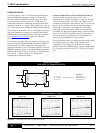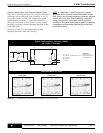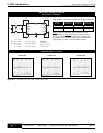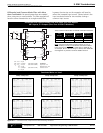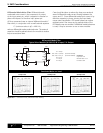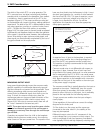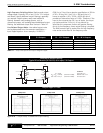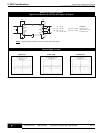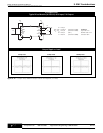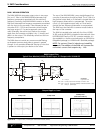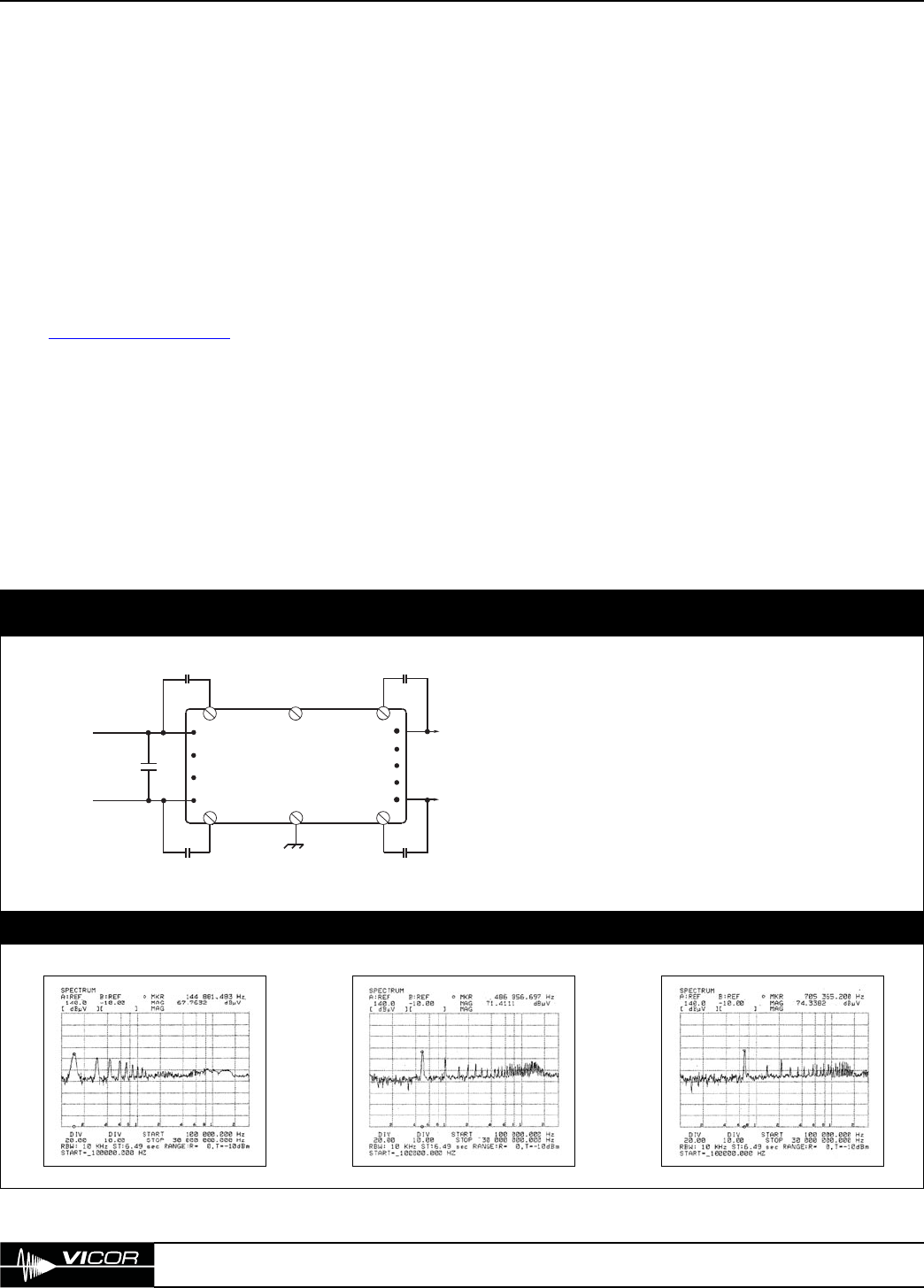
Design Guide & Applications Manual
For VI-200 and VI-J00 Family DC-DC Converters and Configurable Power Supplies
vicorpower.com 800-735-6200 Applications Engineering 1-800-927-9474 Rev. 2.1
Page 18 of 88
+IN
GATE
IN
GATE
OUT
–IN
+OUT
+S
TRIM
–S
–OUT
C2
C1
C2
C3
C3
C1 = 100 μF
C2 = 4,700 pF
C3 = 0.01 μF
Conditions:
Light Load = 3 A
Nominal Line = 48 V Nominal Load = 15 A
Full Load = 30 A
Figure 9–1 — Conducted input noise, no additional filtering
3 Amp Load 15 Amp Load 30 Amp Load
CONDUCTED NOISE
Conducted noise is the AC current flowing between the
source voltage and the power supply. It includes both
common-mode and differential-mode noise. Vicor zero-
current-switching converters are 20 – 40 dB lower in
conducted noise than a traditional board-mounted PWM
converter; however, if a specific EMC specification such as
FCC or VDE must be met, additional filtering may be required.
Since the noise generated is ten to a hundred times lower
than fixed frequency converters, an existing filter should
provide equal or better performance when the conditions
in the
Module Do’s and Don’ts section are followed.
(Section 3)
In the event the system does not contain an existing filter,
the following will provide valuable information relative to
the attainment of system conducted noise objectives.
System requirements, such as Tempest (military) or UL544 /
EN60601 (medical), require a somewhat different approach.
Medical requirements vary as a function of the application
and country — please contact Vicor Applications
Engineering for additional details.
Common-Mode Noise with No Additional Filtering.
Common mode conducted noise current is the
unidirectional (in phase) component in both the +IN and
–IN pins to the module. This current circulates from the
converter via the power input leads to the DC source and
returns to the converter via the grounded baseplate or
output lead connections. This represents a potentially
large loop cross-sectional area which, if not effectively
controlled, can generate magnetic fields. Common-mode
noise is a function of the dv/dt across the main switch in
the converter and the effective input to baseplate and
input to output capacitance of the converter.
The most effective means to reduce common-mode current
is to bypass both input leads to the baseplate with
Y-capacitors (C2), keeping the leads short to reduce
parasitic inductance. Additionally, a common-mode choke
(L1) is usually required to meet FCC/ VDE A or B. (Figure
9–2)
9. EMC Considerations
Conducted Noise vs. Load
Typical Vicor Module
48 V Input, 5 V Output (VI-230-CV)



